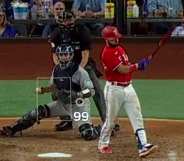A Thursday Scouting Notebook: 5/20/2021
Prospect writers Kevin Goldstein and Eric Longenhagen will sometimes have enough player notes to compile a scouting post. This is one of those dispatches, a collection of thoughts after another week of college baseball and minor league play. Remember: prospect rankings can be found on The Board.
Eric’s Notes
Wes Kath, SS, Desert Mountain High School
High schoolers with profiles driven by their hit tool are becoming more sought-after in the draft room, and every year there are guys who don’t light up the showcase circuit workouts with big tools and instead need some combination of time and impressive swing-and-miss data to be appreciated. Kath is one of those players. On Tuesday, his high school won the Arizona 5A State Championship as Kath homered and reached base several times. He has a sweet lefty swing and advanced bat control, as well as a good baseball frame. He’s currently a shortstop and is capable of making routine plays there, with a sufficient arm for short and good body control, but his size and slow-twitch movements might push him to third base, and some scouts think he’ll eventually end up at first. Kath does not have big bat speed, and his swing tends to look long when he offers at lower pitches, but that’s what has to happen for him to get the barrel there with lift. West Coast hit tool guys like this tend to sign for close to $1 million.

